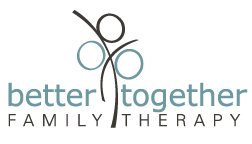3 Tips to Combat Social Anxiety in Adults
Social Anxiety in Adults: A Guide From Maryland Therapists
Do you ever feel sick to your stomach when you try to talk to new people? Feel anxious about presentations at work? Dread making small talk at social gatherings?
You may have something called social anxiety. Social anxiety is when ordinary social situations trigger the body’s alarm systems. Your brain tells you you’re in danger even though you know you’re not. Your heart rate and breathing quickens. You feel a sense of panic. Your thoughts race. You plan your early exit strategies and avoid social interactions.
Social anxiety is a very common diagnosis, which often surprises people. Many people with social anxiety assume they’re the only ones who struggle in social situations. People have a hard time talking about feeling anxious in settings that seem to bring pleasure to others. But many of us experience social anxiety, and there is successful treatment.
Cognitive Behavioral Therapy is a well-established tool for decreasing social anxiety. CBT empowers someone to understand and change their behavior and thoughts, in order to approach situations differently. When behaviors and thoughts are changed, your neural patterns transform as well. Once your brain wires differently, your mind and body respond with less anxiety to once stressful situations.
3 CBT tools to decrease social anxiety:
1) Create a positive affirmation
What is a positive affirmation? Good question! A positive affirmation is a comforting, helpful phrase to repeat to yourself in times of distress. It is usually short and sweet. It should be simple to remember. An effective positive affirmation should remind you of your inner strengths, and that you will be okay.
Here are two examples of helpful affirmations for social anxiety:
I am brave for facing this social situation. [Note the positive quality within the affirmation.]
I am doing something hard and I will be okay.
Create your own or modify and use ours. Affirmations can help guide and ground you. They help you to acknowledge your efforts within a challenging situation.
Affirmations help you modify your thoughts. This is the ‘cognitive’ piece in cognitive behavioral therapy.
2) Do something that scares you
This is the ‘behavior’ piece of cognitive behavioral therapy. CBT teaches you to turn towards your fear in healthy doses. Not ready to go to a party but want to practice talking to someone new? Decide to chat with someone in line for coffee or at a dog park— any scenario where you can practice social interactions in small doses. Doing something that scares you builds up your self-confidence.
Plan some conversations with this CBT process:
a) Find something to talk about
Maybe you want to talk about a holiday that’s coming up. Maybe you know you have something in common: you both like coffee, you both have energetic dogs. Maybe you like their shoes. Having a broad topic to chat about gives you the confidence you need to start a conversation.
b) Say at least one sentence to them
It could be ‘I like your sweater’ or ‘Those are nice shoes. Where’d you get them?’ Whether the person you ask continues the conversation or ends it with ‘thanks’, you succeeded! Preparing a sentence in advance helps decrease your anxiety about what to do and say in the situation.
c) Remember: it’s about practice, not perfect
If you find yourself too scared to make conversation while getting coffee, practice self-compassion. Self-compassion is about being gentle with yourself. Allowing yourself to be human and imperfect without judgment. Remember: you made the effort to shift your mindset. That also rewires your brain. There are many opportunities to practice.
d) Do it periodically
If you find the motivation to do it a couple of times a day, great! If you’d rather start out with once a day, or even once a week, that works too! Finding a schedule that works for you and sticking to it (even if you know it’s hard) is important. It gives you opportunities to practice. CBT is all about practice, practice, practice to shift that wiring and decrease anxiety.
3) Check your thoughts
It’s important to check your anxious thoughts and really think about how likely they are. “They’re going to think I’m so stupid for stumbling over that one word.” How likely is it that a person is going to be judging you like this? Write down the thought. Evaluate it on a scale of 0 (not likely at all) to 10 (extremely likely) of how likely it would be that they would focus on it.
Litmus test the thought by asking: would you be thinking about it in their shoes? Have you ever been in a conversation where someone misspoke? How much did you think about it after the incident? If you did think about it, did you harshly judge that person for the misspoken word? The answer is likely no.
Many people with social anxiety struggle in isolation and silence. Practicing CBT strategies can decrease anxiety and help you to feel confident, capable, and able to connect in life.

